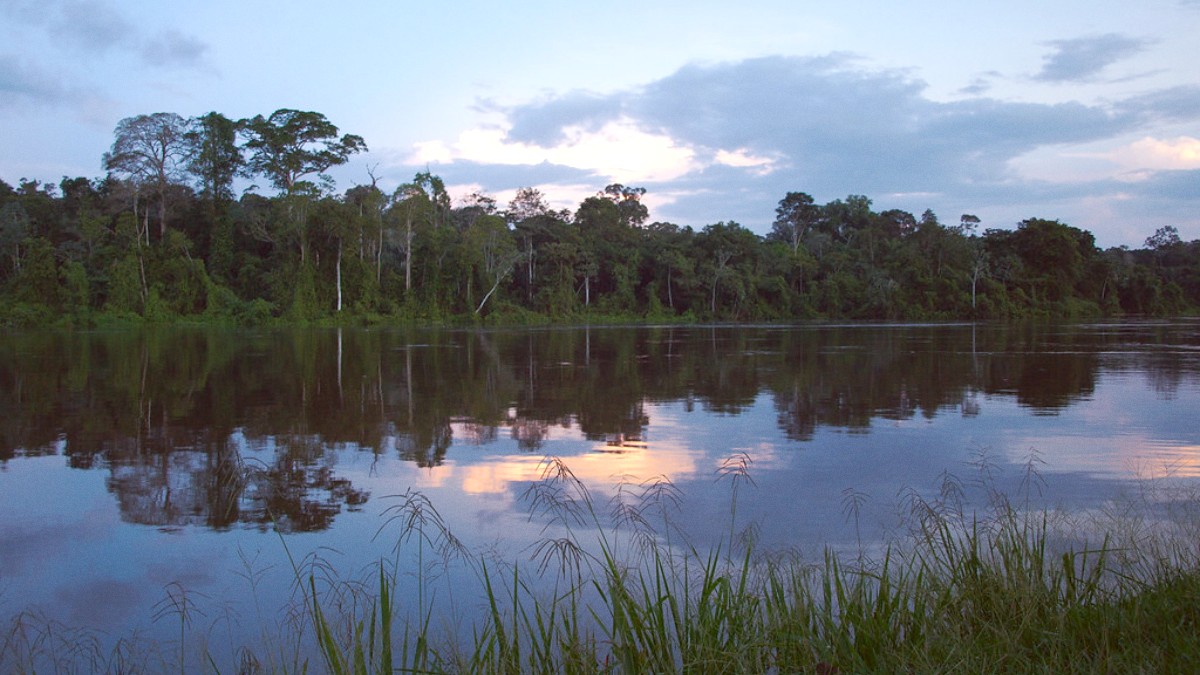
The Guianas
Surinamese dishes feature an unique blend of staples like rice, cassava, and plantains, alongside proteins like chicken, beef, river fish, and salted cod.
spices include Madam Jeanette peppers, cumin, turmeric, ginger, and garlic, often combined with fresh herbs for complex, savory, sweet, and spicy tastes.
This region presents the most diverse culinary experience, mirroring the influences of all ethnic groups present in the country.
Dishes often balance sweet, sour, spicy, and savory elements. Many also display a distinct "umami" depth, creating rich and satisfying meals.
A Creole oven dish made with grated pomtayer, chicken or salted fish, citrus juice, and spices.
A national dish, often served at special occasions and found in local restaurants.
An Indian flatbread served with curried chicken or lamb, potatoes, and long beans.
An ubiquitous and delicious street food, readily available from street vendors and in restaurants.
A Javanese-Surinamese clear chicken broth soup, typically with shredded chicken, vermicelli, sprouts, egg, and fried potatoes.
Locals customarily garnish it with a squeeze of lime and a dash of sambal (chili paste). Find it at local eateries.
Popular sandwiches with various fillings like salted cod, chicken, or roti-style curries.
Barra is an Indian fried savory doughnut, often with chutney. Pindakoek is a sweet, nutty peanut cake.
Suriname presents a range of dining experiences, from casual street food to more formal restaurants.
These are limited in number, mostly found in Paramaribo within luxury hotels (e.g., Torarica Resort). They present an upscale dining experience with international and refined local cuisine.
Paramaribo holds many mid-range restaurants. They include a mix of local Surinamese, Javanese, Chinese, Indian, and international cuisine, creating comfortable dining experiences.
The bustling Central Market is a hub for affordable street food, snacks, and fresh produce. Warungs are small, informal eateries for daily hot meals.
Paramaribo includes restaurants serving Chinese, Indonesian, Indian, Lebanese, Italian, and American cuisines, mirroring the city's diverse population.
These choices are mainly in the capital.
Specific areas within Paramaribo, like the city center, host concentrations of international eateries.
Inquire locally for recommended spots.
Finding vegetarian options is easier due to strong Indian and Javanese influences. Many dishes adapt well.
Halal meat is widely available due to a significant Muslim population, common in Javanese and Indian eateries.
Strictly gluten-free options can be challenging. Cross-contamination is a risk, and many sauces may contain gluten.
Communicating about specific allergies can be difficult. A Travel allergy card translated into Dutch may be useful.
Tours to agricultural areas, like those in Commewijne, may include visits to plantations or local farms.
See where produce is grown and learn about local farming practices.
Visit local markets to discover unique ingredients, spices, and prepared foods from various producers.
Engage with vendors to learn about their products.
Experience authentic Javanese-Surinamese cuisine in a simple, local setting.
Observe local calendars for food-related festivals, often coinciding with national holidays or cultural celebrations.
The Central Market and Grote Markt present vast selections of fresh produce, meats, fish, and spices.
Some tours to Commewijne may include visits to plantations or local farms.
Given Suriname's coastal and riverine areas, fresh fish and seafood are readily available.
Savory puff pastry pies with meat or vegetable filling, ideal for a quick snack.
Available at local bakeries.
A layered cake with cream, often served at celebrations.
A delightful local dessert.
Choose local eateries and markets to support the local economy and experience authentic flavors.
Tap water is generally not safe for drinking. Use bottled water or purified alternatives.
Be mindful of waste. Dispose of trash responsibly, especially in natural areas.
Be adventurous and try local specialties. Tap water is generally not safe for drinking; use bottled water.